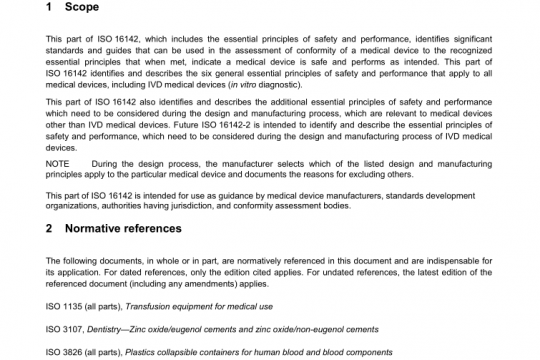AAMI ST65 pdf free download
AAMI ST65 pdf free download.Processing of reusable surgical textiles for use in health care facilities.
2 Definitions, symbols, and abbreviations For the purposes of this standard, the following definitions apply. 2.1 ANSI: American National Standards Institute. 2.2 barrier properties: Ability of a material to resist the penetration of liquids (e.g., irrigating fluids, blood, and OPIM). NOTE: Levels of barrier performance are defined and classified in ANSI/AAMI PB70. 2.3 bioburden: Population of viable microorganisms on or in a product and/or a package. 2.4 bleach step: Use of an oxidizing agent (usually sodium hypochlorite or hydrogen peroxide) within a laundry formula to decompose some types of stains and/or disinfect contaminated textiles. 2.5 boiler: Pressure vessel in which water is heated to be used as hot water or steam. 2.6 break step: Use of alkali salts in a laundry formula to enhance soil removal. 2.7 CDC: Centers for Disease Control and Prevention. 2.8 chemical delivery system: Means by which laundry chemicals are delivered to washing equipment. 2.9 contaminated: State of having been actually or potentially in contact with microorganisms. NOTE—As used in health care, the term generally refers to microorganisms that could be capable of producing disease or infection. 2.10 cool-down: Process of cooling dry, hot textiles, usually inside the drying equipment, to prevent damage, make them comfortable to handle, and minimize fabric wrinkling.2.11 critical zone: Area of protective apparel or surgical drape where direct contact with blood, body fluids, and OPIM is most likely to occur. 2.12 decontamination: According to OSHA, “the use of physical or chemical means to remove, inactivate, or destroy bloodborne pathogens on a surface or item to the point where they are no longer capable of transmitting infectious particles and the surface or item is rendered safe for handling, use, or disposal.” [29 CFR 1 91 0.1 030] NOTE—The term is generally used in health care facilities to refer to all pathogenic organisms, not just those transmitted by blood. 2.13 device master record (DMR): According to FDA, “a compilation of records containing the procedures and specifications for a finished device.” [21 CFR 820.3(j)] 2.14 disinfection: Process that kills pathogenic and other microorganisms by physical or chemical means. NOTE—Disinfection destroys most recognized pathogenic microorganisms but not necessarily all microbial forms, such as bacterial spores. Disinfection processes do not ensure the margin of safety associated with sterilization processes. 2.15 drying equipment: Open-pocket, typically horizontal-axis machines that use heat and air flow to dry damp/wet textiles and that are usually controlled either by a microprocessor or a timer. Three types of heat sources are typically used: gas, steam, or electricity. 2.16 EPA: Environmental Protection Agency. 2.17 extraction: Use of physical forces (usually centrifugal or strike/impact) to remove excess water from a wash load prior to drying.2.18 FDA: Food and Drug Administration. 2.19 finishing step: Last step in the laundry formula, which primarily involves the souring of washed textiles to neutralize their alkalinity and prepare them for extraction and drying. NOTE—In addition to laundry sour, other finishing chemicals can be added during this step, including softeners, antistatic agents, antimicrobial agents, barrier retreatment additives, and optical brighteners. 2.20 first-in, first-out (FIFO): Stock rotation system in which the oldest product is used first. 2.21 flatwork ironers: Apparatus for the drying, ironing, and folding of textile products, usually flat goods (e.g., sheets, pillowcases). 2.22 flush step: Initial step in a laundering formula and used to remove bulk soils from the load. 2.23 heat exchanger: Apparatus that is capable of transferring heat and that typically strips heat from hot waste water (effluent) before the water enters the sewer system and then transfers that heat to incoming water to preheat it. 2.24 hygienically clean: Free of pathogens in sufficient numbers to cause human illness.AAMI ST65 pdf download.
Other IEC Standards
-

ANSI AAMI ISO 16142-1 pdf free download – non-IVD medical devices and guidance on the selection of standards
AAMI standards list DOWNLOAD -

ANSI AAMI ISO 16142-2 pdf free download – General essential principles and additional specifc essential principles
AAMI standards list DOWNLOAD


